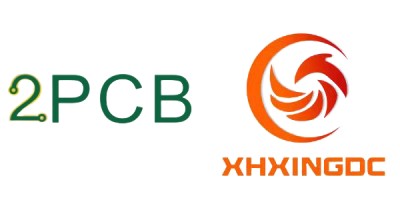PCB design is a very delicate job. There are many details that need to be paid attention to during the design process. Otherwise, you will fall into a “pit” accidentally. In this article, 2PCB has collected some pitfalls that engineers often encounter during the PCB design process, hoping that everyone can learn from them.
Placing too many decoupling capacitors
Generally speaking, the more decoupling capacitors, the more stable the power supply will be. However, too many decoupling capacitors also have disadvantages: wasteful costs, difficult wiring, and large power-on surge current, etc. The key to designing a decoupling capacitor is to select the right capacity and place it in the right place. General chip manuals have design references for decoupling capacitors. It is best to follow the manual.
Device polarity not marked
Some two-terminal components such as LEDs and electrolytic capacitors are polarized. Improper installation of polarized components may result in circuit failure or component damage. The LED will only glow if installed correctly. If installed backwards, the LED will not conduct and may even be damaged due to voltage breakdown. Electrolytic capacitors can explode if reverse biased. So use markings indicating polarity, and polarity markings should not be buried under components.
Silk screen is placed on the pad
In the PCB software, the silk screen tag number is placed on the pad, but it is not displayed on the actual PCB. If your silkscreen designations are placed on pads in your layout, they will be lost when you produce the PCB and it will be difficult to place the device.
Direct vias on the pads
The defect of via holes directly on the pad is that the solder paste melts and flows into the via hole during reflow, causing the device pad to be short of tin, thus forming a virtual solder.
Reference indicators are placed in inconsistent directions
Reference marks on the PCB should face one or at most two directions. Randomly oriented reference designators make assembly and debugging more difficult because the device is more difficult to find.
Can’t always print to one page when printing
reason:
a. When creating the pcb library, it was not at the origin;
b. The components have been moved and rotated multiple times, and there are hidden characters outside the boundaries of the PCB board.
Solution: Select Show all hidden characters, shrink the PCB, and then move the characters to within the boundaries.
Pad overlap
1. The overlap of solder pads (except for surface-mounted pads) means the overlap of holes. During the drilling process, drilling multiple holes in one place will cause the drill bit to break, resulting in damage to the hole.
2. Two holes in a multilayer board overlap. For example, one hole is an isolation plate and the other hole is a connecting pad (flower pad). This will appear as an isolation plate after drawing the negative, resulting in scrapping.
Draw pads with filler blocks
Drawing pads with filler blocks can pass DRC inspection when designing PCB circuits, but it is not possible for processing. Such pads cannot directly generate solder mask data. When solder resist is applied, the filler block area will be covered by solder resist. This makes it difficult to solder the device.
There are too many fill blocks in the design or the fill blocks are filled with extremely thin lines
1. The light painting data is lost and the light painting data is incomplete.
2. Because the filling blocks are drawn one by one during light drawing data processing, the amount of light drawing data generated is quite large, which increases the difficulty of data processing.
The power and ground wires are designed to be too thin
If the width of the power line and ground line is designed to be too thin, unstable operation and board burnout may occur after the board is made and the components are soldered on. Engineers cannot pursue too thin ground wires and power wires when designing PCBs. They need to make corresponding adjustments according to the power and current of the application. The beautiful size of the board is one thing, but first they need to ensure that it can be used before considering the following issues.

